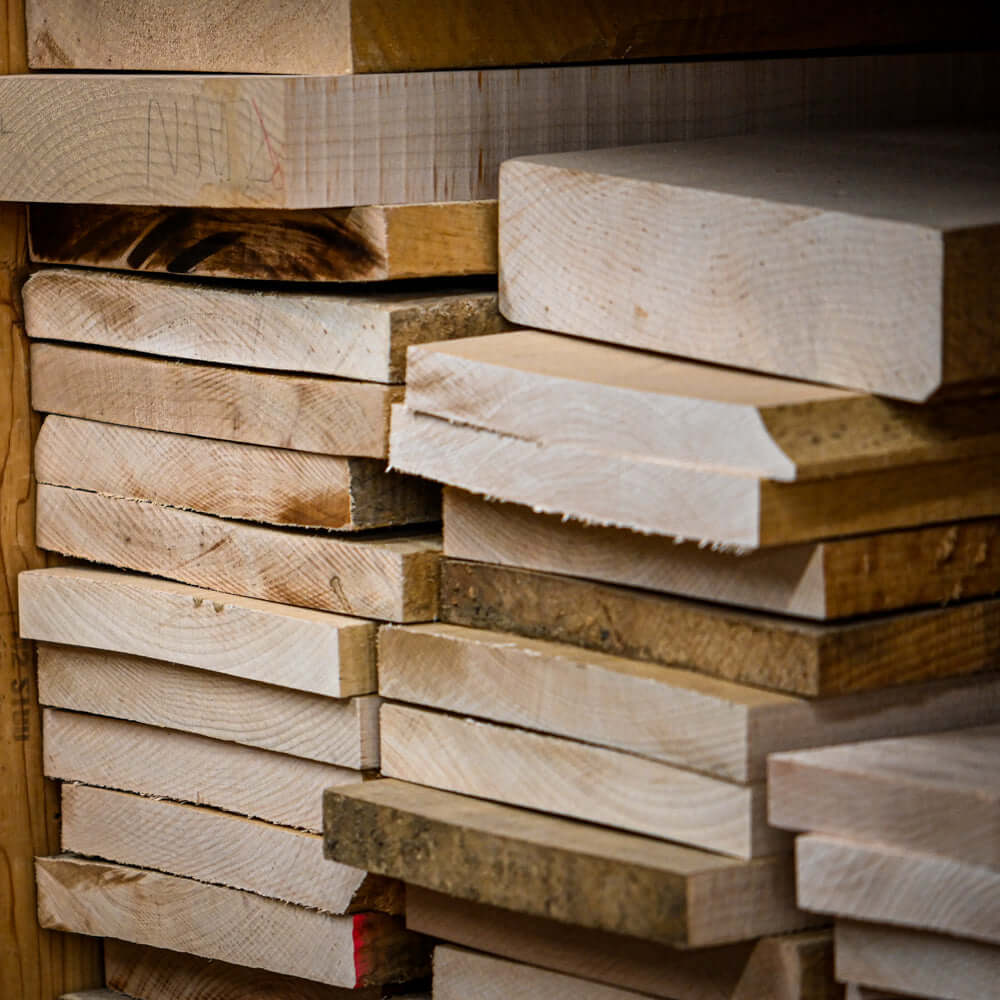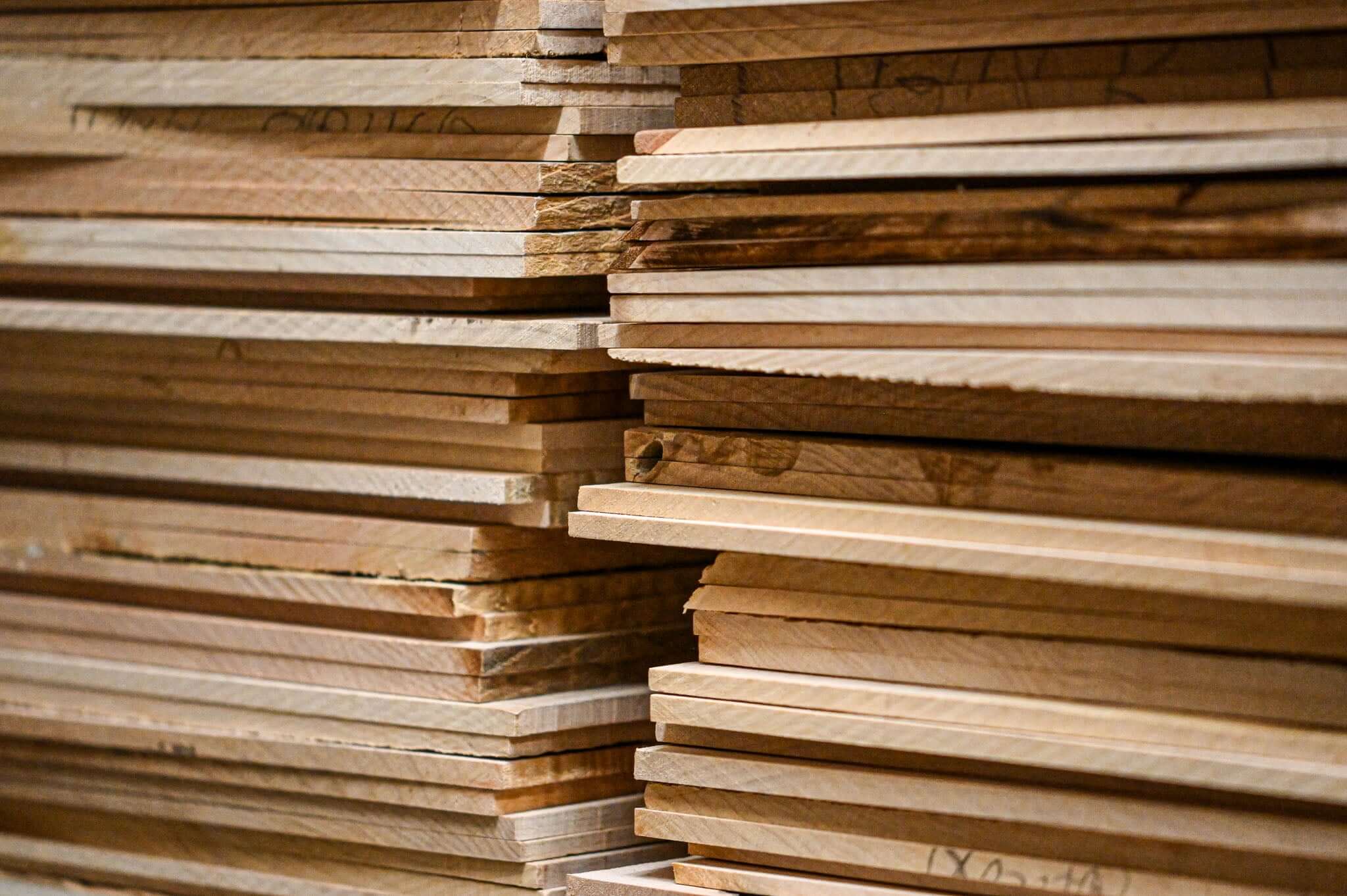Discover the Belforti Wood Library
Our wood library is a unique collection of wood pieces, founded and organized on a state of the art rating system using the latest technologies and scientific methods available.
The library is organised in 3 categories, based on several factors that are detailed below, but most importantly the Belforti Rating™, that combines different scientific measurements into a unique score.
PREMIUM GRADE
These woods are carefully selected for their sound quality and durability. They offer great tonal balance and are aesthetically pleasing with minimal irregularities. They are a great choice for any player looking for a reliable and quality instrument at a competitive price.
All the Premium Grade woods score between 70 & 79 on the Belforti Rating™
MASTER GRADE
The Master Grade woods are a step above in terms of visual allure and tonal superiority. They showcase more pronounced figure and color, and are expected to produce superior tonal richness and resonance. They are selected for their flawless quality and unique aesthetic beauty, making them suitable for professional musicians and serious amateurs.
All the Master Grade woods score between 80 & 89 on the Belforti Rating™
PRIVATE STOCK
The highest quality woods fall into the Private Stock category. These woods are often reserved for custom shop and high-end boutique instruments. They are typically distinguished by exceptional beauty, rarity, and tonal excellence. Instruments made with Private Stock woods are true works of art and are often collected as much for their aesthetic appeal as their musicality.
All the Private Stock woods score between 90 & above on the Belforti Rating™
Origins, Supply & Ethics
At Belforti Instruments®, we understand the immense value of the world's forests and the role they play in the crafting of our instruments. This is why we strive to ensure that our wood sourcing practices are as responsible and ethical as possible.

Origins
Our carefully curated wood library features a diverse range of premium quality woods sourced from all corners of the globe. We choose species known for their unique tonal qualities, aesthetic appeal, and working characteristics. From the rich resonance of American Mahogany to the vibrant tones of African Ebony and the striking beauty of Michigan Maple, we have assembled a collection that caters to every musical requirement and personal aesthetic preference.
Our production being very small in numbers, we allow ourselves to use exotic species, as long as they come from our trusted sustainable sources. The main bulk of our essences are sourced locally, mainly from our beloved French Jura and Vosges forests.

Sustainability
At Belforti Instruments, sustainability is a priority. We recognize our role in preserving the world's forests for future generations. Therefore, we only allow wood in our shop that has been collected in well-managed, sustainable forests or family exploitations.
Our philosophy is that in many cases, such as Madagascar, a country I’ve lived in and love deeply, there are a lot of small family owned exploitations that struggle to protect the environment and ensure their future with the local ressources. Meanwhile next door often exists doubtfull exploitations that don’t respect the conservation guidelines to sustainable harvest. If we choose to boycott an entire country or specie, we will indeed solve a part of the problem, but to the detriment of a potential healthy development of local communities that might turn towards poaching and black market trading if their business crashes.
Instead, we work closely with small producers, family owned or cooperative businesses from accross the globe. Doing this allows us to support positive actors of the industry, and shows local communities that the proper way of harvesting ressources is more viable financially and ethically.
Moreover, we continually strive to minimize waste in our manufacturing process by utilizing every piece of wood to its full potential.

Ethical Supply
Our commitment to ethical sourcing is unwavering. We work closely with suppliers who uphold the highest environmental standards and who share our respect for the world's forests. The wood we use is legally sourced and compliant with international laws and regulations, including the Convention on International Trade in Endangered Species of Wild Fauna and Flora (CITES) and the Lacey Act.

Giving Back
Our reverence for the natural world extends beyond our wood sourcing practices. We believe in giving back to the environment and contribute to reforestation initiatives. Our aim is to ensure that the creation of beautiful music does not come at the cost of our planet's health.
By choosing a Belforti Instrument, you are not only investing in an instrument of unparalleled quality and craftsmanship but also supporting a business that values ethical and sustainable practices. Together, we can create music that resonates with the harmony of nature.
Conservation, drying & aging process
At Belforti Instruments, we understand the significant role that properly aged and conserved wood plays in the creation of our exceptional instruments. Our dedication to quality and craftsmanship extends to the meticulous care and patience we put into the preparation of our tonewoods.
CONSERVATION
Our tonewoods begin their journey with careful conservation. To prevent warping or cracking, we seal the ends with wax or similar substances, regulating moisture loss. This meticulous preservation ensures the wood retains its beauty and resonance, laying the foundation for exceptional instrument craftsmanship.
DRYING
After conservation, the wood undergoes air and kiln drying. Air drying gently reduces moisture over months or years, while kiln drying removes any excess under controlled conditions. This process ensures optimal moisture content, matching the conditions our instruments will face throughout their lifetime.
AGING
The final phase is aging, where wood stabilizes and its tonal properties mature. Stored under controlled conditions, its resins harden, enhancing resonance and responsiveness. At Belforti Instruments, we invest years in this process, ensuring each piece of wood contributes to the unique voice and superior quality of our instruments.
Objective Tonewood Performance Analysis
The Belforti Rating

What it does
Production Consistency Approach
The Belforti Rating aims at acheiving a greater production consistency. To put it simply, destroy the myth saying that "all guitars are different"
System Capabilities
- Material property retroengineering
- Systematic wood grading
- Comprehensive performance database development
- Reproducible material characteristic mapping

The Basics
Foundational Principles
Objective Material Characterization
- Exclusive focus on measurable, quantifiable material properties
- Elimination of subjective perception in material selection
- Systematic approach to understanding wood's fundamental physical behaviors
Scientific Measurement Framework
The system draws from multiple interdisciplinary research domains:
Materials Science - Acoustic Engineering - Vibration Analysis - Non-destructive Testing Methodologies

The Parameters
Comprehensive Analytical Parameters
BING (Beam Identification by Non-destructive Grading)
Developed by CIRAD, BING analyzes wood's mechanical properties through vibration testing.
Detailed Material Properties
Density Measurement - Janka Hardness - Modulus of Elasticity - Modulus of Rupture
Advanced Analytical Techniques
FFT Analysis - First Mode Frequency
Quantified Sustain Potential (QSP)
The QSP establishes a relationship between density and Quality Factor (Q-factor).

The Score
Rating System Mechanics
Scoring Methodology
- Comprehensive rating on 100-point scale
- Threshold for critical component usage: 70 points and above
- Sub-70 point materials: Repurposed for secondary components
Tested Component Scope
- Guitar bodies
- Necks
- Fretboards




